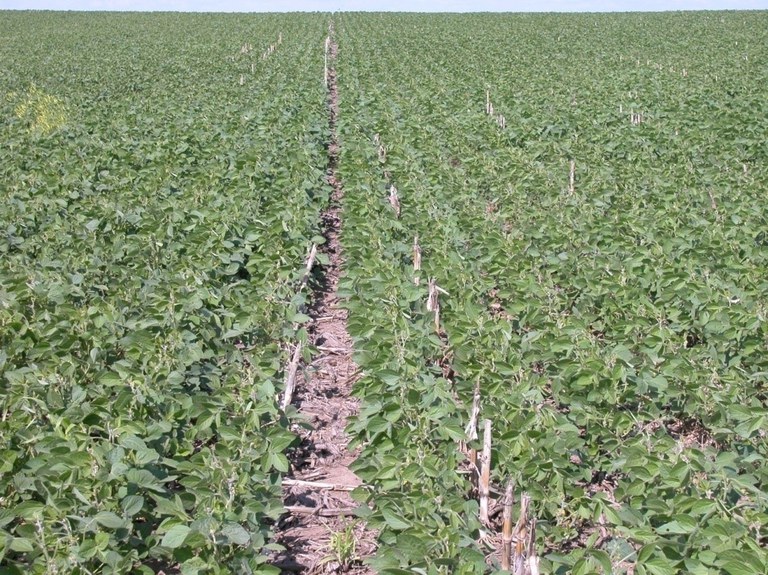Narrow Your Soybean Rows
Based on the weather forecast, farmers should be able to resume planting soybean this week. If planting equipment provides the opportunity to plant soybean in narrow rows, this plant establishment method will likely increase yield and profitability. Row spacing less than 30 inches, combined with timely planting and other recommended plant establishment methods, will allow the soybean field to have a full canopy earlier in the season. Early canopy closure allows plants to capture more sunlight, conserve soil moisture and be more competitive with weeds resulting in higher yields.
Averaged over 22 NDSU soybean row-spacing trials, 14- to 21-inch rows had 3% greater yield compared to 28- to 30-inch rows. As an example within this database, 6 site-years (Oakes, Carrington and Minot; 1999-2013) of research shows an average yield of 50.1 bu/acre with 14- to 21-inch rows compared to 48.1 bu/acre with 28- to 30-inch rows. Also, in the same 6-year database, soybean yield averaged 51.3 bu/acre with 7- to 10-inch rows (2% advantage) compared to 50.1 bu/acre with 14- to 21-inch rows.
The North Dakota Farm Business Management Education Program compiles economic data on commercial farms including soybean row spacing. Soybeans produced on cash-rented fields in the Carrington area during 2014 averaged 33.9 bu/acre (7% advantage) compared to 31.4 bu/acre in 30-inch rows. The net return/acre with the narrow rows was $46 compared to $22.50 with wide rows.
Greg Endres
Area Specialist, Cropping Systems



